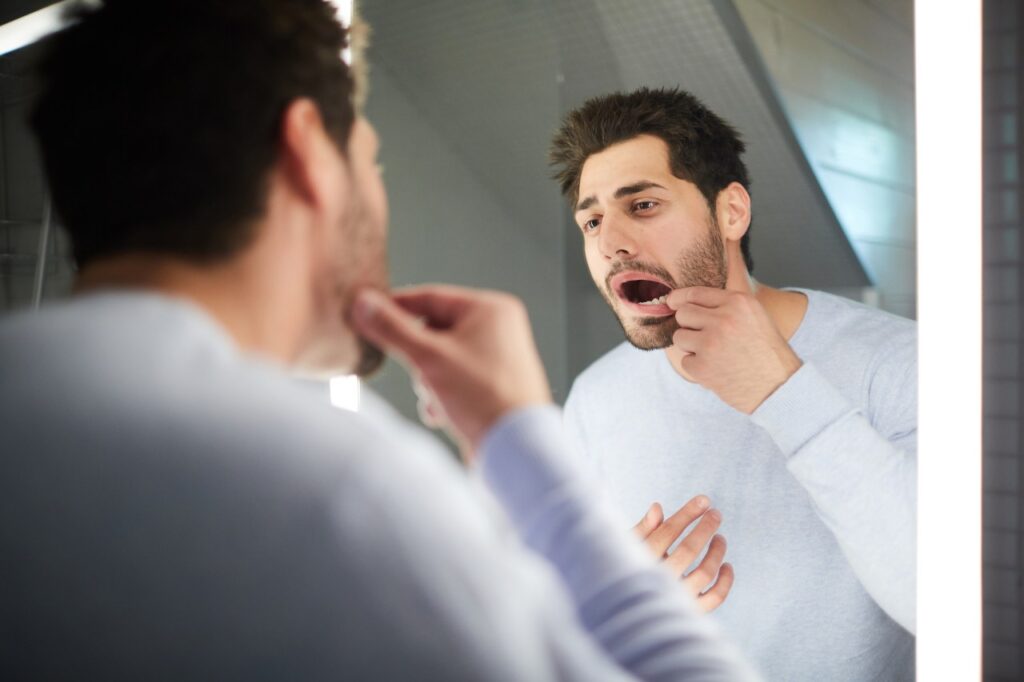Do you notice a shift in the positions of your teeth? Or do you find them not looking as straight as they used to look? If your answer is yes, you are likely going through the phenomena known as teeth shifting. Sometimes you feel the teeth shifting pain as well. This change can be disturbing and concerning. But don’t worry, as it is a common occurrence that can be treated, and the shift can be reversed. Read on to know about its causes, diagnosis, and treatment.
Signs of your Teeth are Shifting
Signs of teeth shifting can include a change in the alignment of your teeth, feeling pressure or discomfort, or noticing gaps forming between teeth. If you observe any of these indicators, it’s advisable to seek advice from a dental professional to address the issue promptly.
What are the Causes of Teeth Shifting?
The shift in the positioning of teeth often happens with aging. But apart from that, any of the following can be the contributing factors:-
-
Teeth Extraction
Our teeth are genetically programmed to fill in the gap of removed teeth. So if you recently had a tooth extraction, it can be the reason for your shifting teeth.
-
Not Wearing Retainers
Sometimes teeth shift after braces treatment. Wearing retainers after braces are removed is an important part of the treatment. If you don’t wear retainers regularly, your perfectly aligned teeth may move back to their previous position.
-
Pregnancy Hormones
Apart from all other kinds of havoc in your body, including nausea and back pain, pregnancy hormones also cause bleeding gums. Hence the teeth become loose and sometimes shift rapidly.
-
Periodontal Disease
Periodontal disease or gum disease causes the gums to be extra soft and leave the roots of teeth vulnerable. It also allows rapid movement in teeth positions.
-
Bruxism
Bruxism, also known as teeth grinding, puts a lot of pressure and force on teeth. The roots of teeth get weak, and they can shift easily from their original position. Patients with bruxism are often used to grinding teeth in sleep
-
Other Causes
Habits like pushing your tongue against your teeth, making certain sounds, resting your chin on your hand, and sleeping on your face apply gentle pressure on your teeth. This gradual pressure can cause teeth to shift over time.
What are Shifting Teeth Symptoms?
Apart from the visible shift in your teeth, you can look out for these indicative signs your teeth are shifting:-
-
Dental Midline Shift
If the dental midline of upper and lower teeth is not matching anymore, your teeth are probably shifting.
-
Problem in Biting
If your teeth are hitting each other while biting, it can be an indication of shifting teeth.
-
Swelling and Pain in Gums
Painful, puffy, or bleeding gums are actually the symptom of gum disease, which can ultimately cause teeth shifting.
-
Visible Effect
Another visible shifting teeth symptom is your molars hitting the pre-molar teeth. Also, check if your incisors are lining up with your bottom teeth or not.
How to Ease the Teeth Shifting Pain?
You can get relief from teeth-shifting pain by using the following remedies:-
-
Over-the-counter Pain Relievers
You can get oral anesthetic gels and pain-relieving medicines from your local drug stores. These medications are safe if taken in moderation.
-
Ice Pack
An ice pack can ease the pain and swelling in your mouth caused by teeth shifting. You can put an ice pack from outside of your mouth.
-
Soft Diet
Since your teeth are weak, don’t put them through chewing hard food. Eat a soft diet, including pasta, smoothies, mashed potatoes, etc.
-
Cold Water
Drinking cold water helps in numbing all kinds of teeth pain, including teeth shifting pain and braces pain.
-
Contact Your Orthodontist
All the remedies listed above are suitable for temporary relief. But you should see your dentist or orthodontist if you feel the pain is persisting for long.
How to Treat Shifting Teeth?
The first step to stopping the shifting of teeth is to identify its cause. For instance, if your teeth are shifting after braces treatment due to not wearing retainers, you can immediately start wearing them again for maximum time. Although it can be painful initially, it can reverse the teeth shifting in the beginning stage. You can also identify and correct your daily habits causing the dental disturbance. For other possible reasons, a dentist or orthodontist can diagnose properly and suggest appropriate treatment, such as putting you on removable or permanent retainers and treating teeth grinding. Improving your dental hygiene also helps.
Key Takeaway!
Teeth shifting is common, and it might not be worrisome every time. But in some cases, it can lead to biting issues and teeth shifting pain. Moreover, it can jeopardize your dental health in other ways. In the longer run, you can suffer from tooth decay or periodontal disease. Therefore it is best to take your dental health in your own control and visit your dentist for proper guidance and treatment.

0 comments on “Shifting Teeth: Causes, Symptoms & Treatments”